QAMYAB – THE FORGOTTEN GEMS OF BOLLYWOOD
Qamyab is our humble tribute to all those lesser-known actors, one hit wonders and junior artists who we see umpteen times but don’t know about; beyond their faces. These actors have been an integral part of Bollywood but didn’t get their due. This series is our sincere attempt to put a name to these faces, familiarize them to our readers and celebrate their achievements in life – however big or small. We believe that every artist contributes in his/her own way to the cinema’s success. Qamyab will explore the unknown lives of such actors and artists as we believe even these forgotten gems of Bollywood deserve their due recognition today.
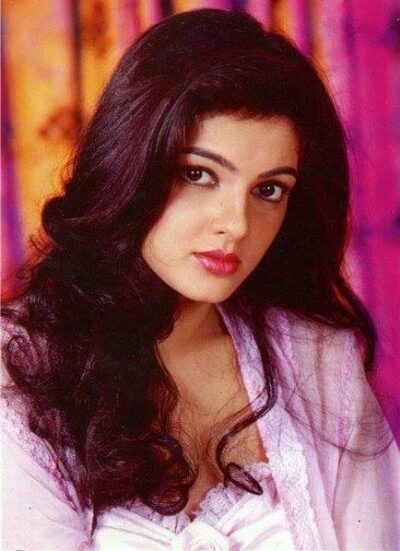
It takes a lot of effort as well as luck to make it big in Bollywood, especially for outsiders. But quite a few Bollywood actors have lost everything after achieving an initial spurt of name and fame. We have already covered Anjali Paigankar, who just disappeared after a wrong career move. Another actress, who was so close to superstardom appearing as the lead in some blockbuster hits of her time, too faced the same fate. That lady is Mamta Kulkarni, the good-looking Marathi ‘mulgi’ whose bold photos and obnoxious interviews nixed her booming Bollywood career.
Born on 20th April, 1972 to a middle-class Maharashtrian Brahmin family, Mamta’s real name is Padmavati Kulkarni. Her father Mukund was a cop while mother Meera was a homemaker. She has two sisters as well. Meera was veteran actor Usha Kiran’s sister, who aspired to be an actor herself and saw her dream getting realised in her daughter Mamta. Thus, Mamta’s mother encouraged her to pursue an acting career and she started off by doing some modelling assignments.
At an early age, Mamta was approached by Mirza Brothers for their movie Yaara Dildara (1991) and entered in to an annual contract with them to complete the film within a year. Unfortunately, their on-floor movie Rama O Rama (1988) got delayed due to which the contract expired and the film was finally made with another newcomer Ruchika Pandey.
Mamta’s journey as an actor then began with the Tamil movie Nanbargal (1991), which became a surprise success in the South. A year later, she entered Bollywood with a remake of this Tamil hit titled Mera Dil Tere Liye (1992). Unfortunately, this movie went largely unnoticed and Mamta had to wait until Mehul Kumar’s Tirangaa (1993), which became a smash hit and Mamta Kulkarni suddenly became hot property. Aashik Aawara, a romantic musical with debutant Saif Ali Khan, followed which also worked very well at the box office. Mamta won the Filmfare award for ‘Best New Face’ for this film.
Naturally, filmmakers queued up outside her door to sign her and Mamta became a part of some big projects of that time. She was competing with the likes of Manisha Koirala, Karisma Kapoor, Ayesha Jhulka, Pooja Bhatt, Shilpa Shetty, etc who had entered the industry around the same time. Mamta was often compared to her senior Mandakini, who also had the image of bold and beautiful actress of that era.
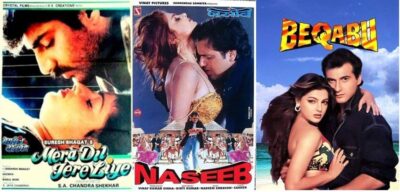
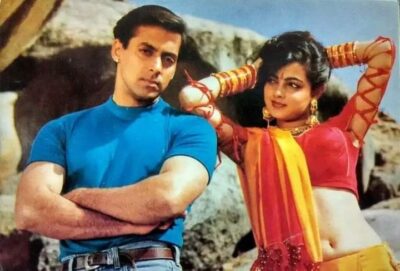
Mamta’s next few notable releases were Bhookamp (1993), Waqt Hamara Hai (1993), Betaaj Badshah (1994), Dilbar (1994) and Vaade Iraade (1994). Except for the lukewarm Waqt Hamara Hai, all the others tanked at the box office.
1995 was a good year for Mamta Kulkarni, which started with the blockbuster hit Karan Arjun directed by the noted producer- director Rakesh Roshan. Mamta was paired opposite then upcoming star Salman Khan and they looked good together on screen. In the same year, Mamta got to work with the other Khan- Mr. Perfectionist Aamir- in Ashutosh Gowariker’s Baazi, which turned out to be an average grosser. Her next big hit came in June 1995 when Akshay Kumar’s Sabse Bada Khiladi released to a thunderous response. Mamta’s character had grey shades to it and her elaborate kiss with Akshay became talk of the town.
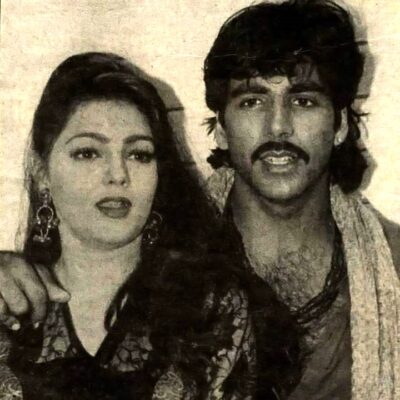
Mamta Kulkarni was always known for her outspoken nature and film magazines would invariably feature her spicy interviews. The popular Stardust magazine did the unthinkable when they featured Mamta on their cover in a topless state with her hands covering her bare breasts. A huge controversy erupted with certain political parties protesting on the streets against it. Quite a few legal cases were filed against Mamta and she faced a lot of flak for this rather bold photo shoot. Later, she tendered a public apology and also paid a compensation of Rupees sixteen thousand in court. During this time, producer Ram Dayal approached her for an adult Nepali movie but Mamta firmly declined the offer.
Steadily, her career saw a decline particularly when a movie she was highly banking on – N. Chandra’s Beqabu (1996) – bombed badly at the box office. Kirti Kumar’s Naseeb (1997) featuring Govinda as her co-star, was a bigger flop. The only silver lining during this low phase was her item song “Koi jaaye toh le aaye” in the Rajkumar Santoshi hit Ghatak (1996), which received tremendous appreciation from the audience.
Santoshi repeated Mamta in his next China Gate (1998), which became a subject matter of another major controversy in her career. Mamta accused Rajkumar Santoshi of making a pass at her and then chopping off her role when she refused his advances. Rumours circulated about Mamta getting dropped from China Gate due to her unprofessional behaviour but was allegedly reinstated after the intervention of a certain underworld don. Rajkumar Santoshi denied all the rumours and China Gate released in November 1998. The film, inspired from Akira Kurosawa’s Seven Samurai, didn’t live up to the humongous expectations and Urmila Matondkar, in an item song hogged the posters while Mamta was invisible in the promotion.
The China Gate controversy affected Mamta’s career significantly and filmmakers became reluctant to work with her. She appeared in only a handful of movies after that. She did get a surprise hit in form of the 2001 Sanjay Kapoor starrer Chhupa Rustam but her career was almost over by this time. Her fans were shocked to see her in a B grade movie titled Divine Temple Khajuraho in 2002. Mamta Kulkarni’s final release was Kabhie Tum Kabhie Hum (2002). She quit Bollywood after that and was not heard of for quite some time.
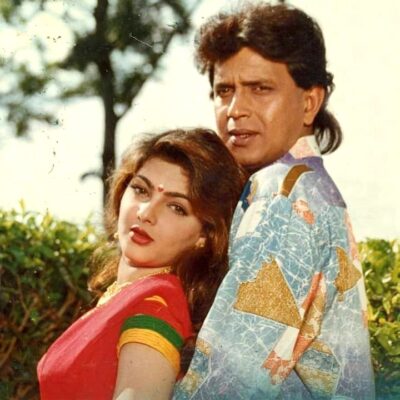
In 2016, Mamta Kulkarni resurfaced with yet another controversy when she was arrested along with her partner Vicky Goswami in Kenya in a drug dealing and money laundering case. Apparently, she had ran off with Goswami to Dubai after the end of her Bollywood career and lived an anonymous life there before getting caught in the drug case. Vicky was carted off to USA in 2017 to face the trial while Mamta remained in Kenya.
Following the controversy, Mamta Kulkarni made a public appearance for the first time in sixteen years and claimed that she is a spiritual person now having killed all her desires. In 2012, she wrote a book titled Yogini based on her life and spirituality. In 2023, there were rumours of her entering the Bigg Boss house but that never happened.
During an interview with a TV channel, Mamta quoted that she got enlightened sometime in 2010 and since, has immersed herself in spirituality. She refuted all the malicious allegations and expressed no intention to return to Bollywood again. But as the saying goes… ‘Never say never again’!! We hope Mamta Kulkarni makes a comeback to films soon. Her fans would certainly want that!!
All images courtesy Internet
COMMENTS